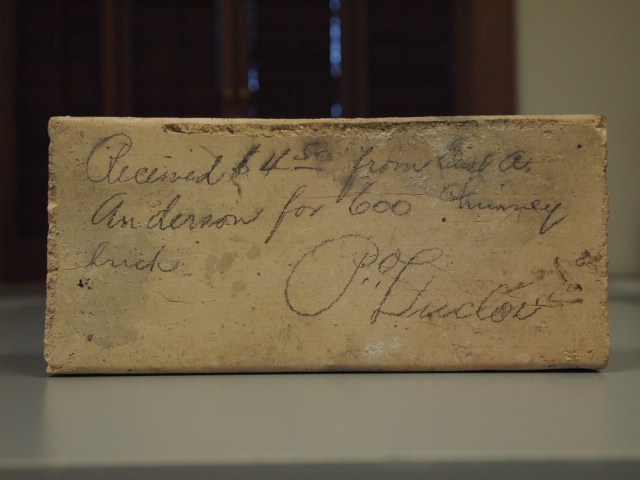
If you had the good fortune to attend our Brick by Brick: Building Community Development Through History event series, you may have noticed the abundant use of yellow brick as a visual. The image showed a portion of the yellow brick fireplace in the Research Room at The Charles A. Weyerhaeuser Memorial Museum, home of the Morrison County Historical Society (MCHS), and served as a background for event slides, publicity, and for event host and MCHS executive director, Mary Warner.
The brick visual perfectly fit the theme of the series. Not only is brick an important building material, yellow brick was a key economic driver in Morrison County around the turn of the 19th century. Produced from local clay found in or near the county seat of Little Falls, the distinctive yellow brick was manufactured by a number of brick companies that operated in the area from about 1892 to 1915.
Donated to MCHS in 2009 by Gary Irwin, a former Little Falls high school science teacher, this yellow brick from the Duclos Brick Factory was found when the donor was tearing down a chimney at his house. Serving partly as a receipt, one side lists the purchase of six hundred bricks at $4.50. Each brick cost 7.5 cents.
The Duclos Brick Factory was owned and operated by Odilon Duclos. Duclos was famous for reportedly making the first ever molded brick for the neighboring county of Stearns in 1867, not long after the end of the Civil War (Northwest Magazine 11/1892). Less than two decades later, around 1884, he had started his first brickyard in Little Falls.
Morrison County’s yellow brick was highly sought and was used across the region, state and nation, including at the Northern Pacific Railroad Shops in St. Paul and the Northern Pacific Railroad roundhouse in Glendive, Montana. Little Falls yellow brick was popular!
~Ann Marie Johnson, Preservationist


